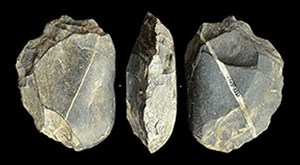Article contents
New perspectives on the Late Pleistocene peopling of the Tibetan Plateau: the core-and-flake industry from the Tongtian River valley
Published online by Cambridge University Press: 21 January 2021
Abstract

The prehistoric peopling of the Tibetan Plateau is a contentious issue, with most archaeologists proposing that the first occupants migrated into the region from the north and the north-east, including from the vast area between the Altai Mountains and northern China. Here, the authors report on a newly discovered core-and-flake industry at the Tangda and Xiege sites in the south-eastern hinterland of the Tibetan Plateau. The discovery at these two sites of a lithic technology typical of the Upper Yangtze region provides new evidence for a south-eastern route of Late Pleistocene human dispersal onto the Tibetan Plateau. This research emphasises the diversity and complexity of early immigration events on the pre-Holocene plateau.
- Type
- Research Article
- Information
- Copyright
- Copyright © The Author(s), 2021. Published by Cambridge University Press on behalf of Antiquity Publications Ltd
References
- 3
- Cited by




